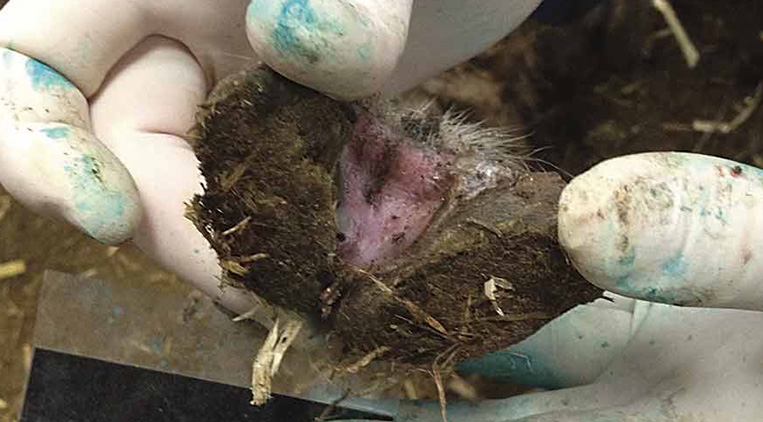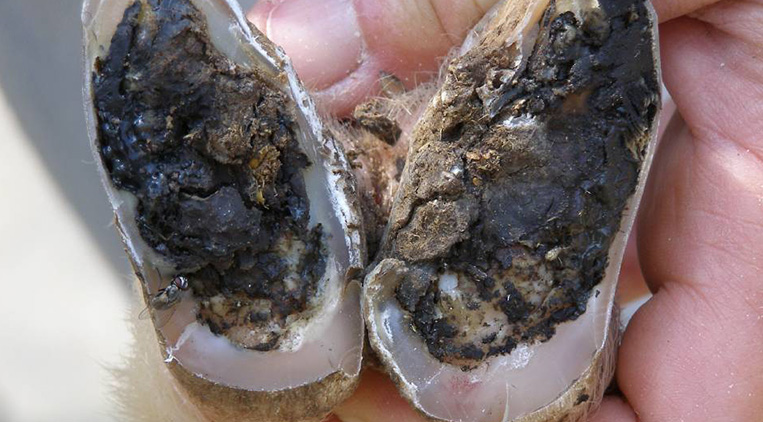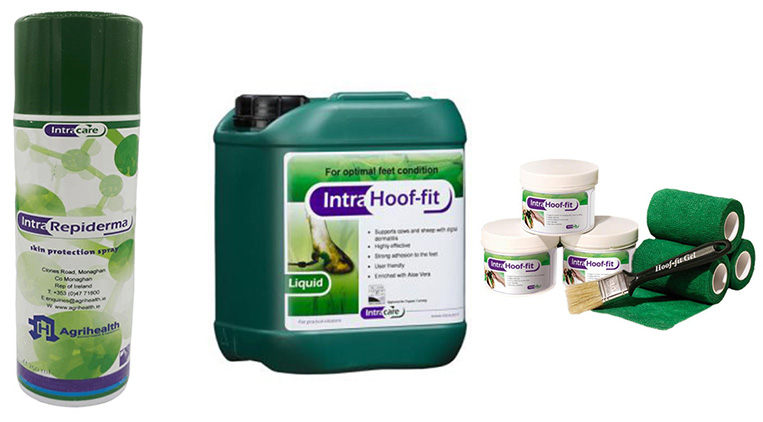
Foot ailments in sheep
It is a simple fact that if you keep sheep, you will have to deal with lameness on an annual basis. Sheep, and particularly some of the terminal breeds, are notoriously prone to debilitating hoof ailments. Foremost among these are scald and foot rot. Both tend to proliferate in wet, warm conditions so sheep farmers should be vigilant at the moment. While I haven’t encountered any hoof issues on our farm this autumn, I have heard several farmers complaining of a major outbreak of either scald or foot rot.
Now we shouldn’t downplay the seriousness of lameness in the flock. While scald or foot rot may not be as immediately dangerous as many other common sheep diseases, it can have disastrous long-term consequences for farm productivity and revenue. It is well known that lame sheep don’t thrive, and this will become a serious problem as we enter tupping season. If ewes can’t achieve a decent body condition score, they will struggle to hold to the ram. I don't need to describe what a disaster a lame ram will be.
That’s why today, in the Animal Medicines Corner, we are going to discuss the best treatments for scald and foot rot in sheep.
Scald
In a lot of ways, scald is a less serious problem than foot rot, and easier managed. When you notice a lame sheep or two in your flock, the first thing you should do is isolate them. Once you have done this, you can examine the affected hoof to decide on the best course of action.

If the hoof is not smelly but has interdigital sores, it is probably a case of scald. This condition is particularly common among lambs on pasture but is also well-attested in housed ewes. Treatment is relatively straightforward. You can use an aerosol spray such as the popular Intra Repiderma aerosol; or you can walk them through a formalin (3%) or copper-sulphate (10%) footbath. Intra manufacture a purpose-designed footbath solution for sheep that will be effective against treating this disease. The same brand also produces a gel treatment for claw ailments in sheep, which can be applied with a brush.
For best results, these treatments should be used in accordance with the manufacturer’s advice.
Foot rot
Foot rot is a real scourge. It is a highly contagious disease that thrives in the warm, wet conditions we are experiencing this autumn. As already touched on above, if you notice lame sheep in your flock, isolate them immediately. This will mitigate the risk of disease sweeping through your animals. Diagnosis is not difficult to make. The foul smell of the hoof is the most obvious symptom, but you will also notice rot on the hoof, which may be lifting away.

How to treat it? Unfortunately, there is no fast solution to a case of foot rot. On our farm, there have been years when we spent weeks trying to control an outbreak. We used to keep Suffolk X ewes that seemed to contract it every autumn. In looking for a good cure, I have heard all kinds of suggestions, and have found most to range from moderately successful to completely useless. Some farmers swear by regular applications of Stockholm Tar or Copper Sulphate. These treatments will be fairly successful against scald, but I haven’t found them to be particularly impactful against foot rot.
In my experience, paring the hoof before pursuing a rigorous Intra foot-bathing regime usually helps to manage the disease. However, in some severe cases you may need to seek an antibiotic injection from a vet.

Thanks for reading
So that’s it from the Animal Medicines Corner this week. Hoof ailments are an unavoidable scourge at this time of year, so a lot depends on how we respond to it. That’s why I would reiterate the importance of isolating lame sheep as quickly as possible to prevent the spread of foot rot.
And as always, if you have any thoughts or ideas about the best ways to treat foot rot in sheep, please be sure to let us know!










